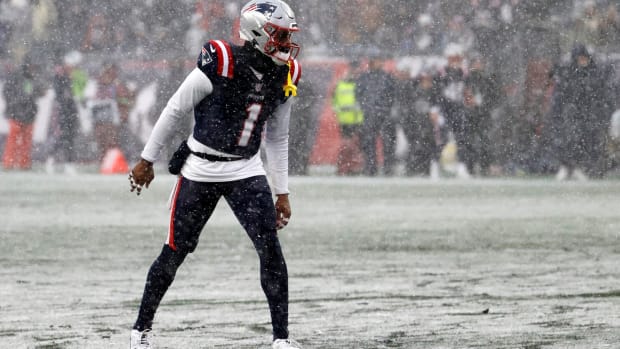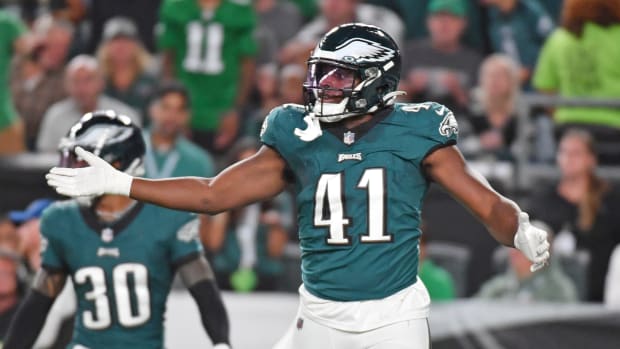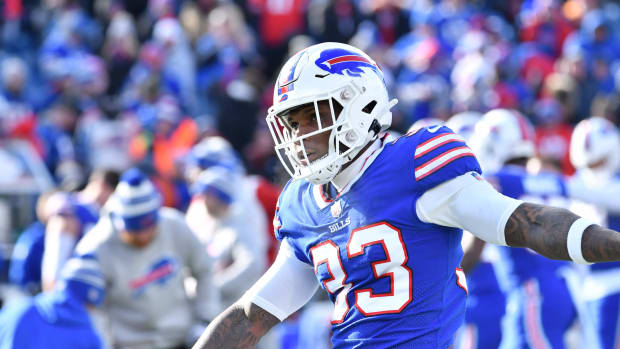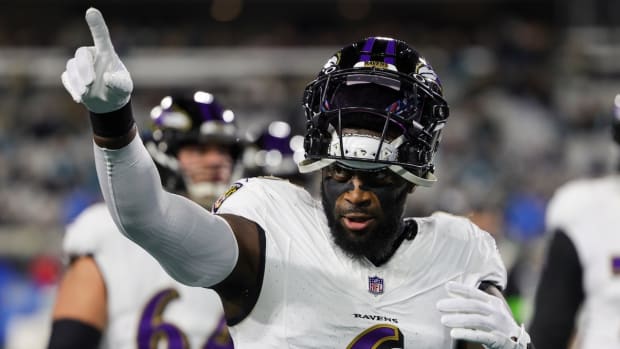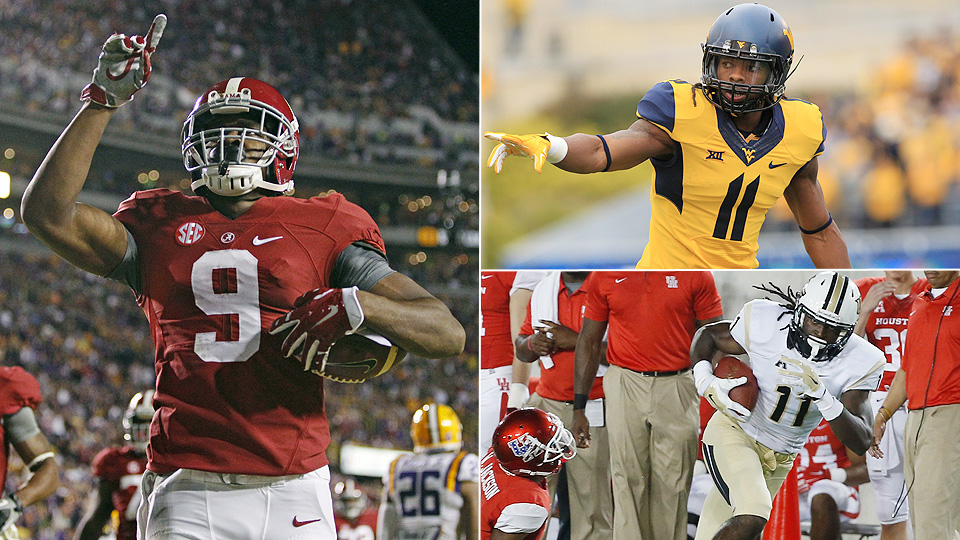
2015 NFL draft positional rankings: Wide receiver
The 2014 draft produced one of the best classes ever at receiver, with 10 different draftees posting 500 receiving yards or more in their rookie seasons. While the group was led by Odell Beckham Jr., Mike Evans and Kelvin Benjamin—the three rookies to top 1,000 yards last year—others like Sammy Watkins and Jordan Matthews (the NFL's second-most productive slot receiver in 2014, behind only Randall Cobb), deserve consideration as future franchise weapons, even as some of them are proving that the future is now.
• KLEMKO: Inside a typical pro day | The MMQB's NFL draft roundtable
The SI 64: Sports Illustrated's top 64 prospects in the 2015 NFL draft
Will the 2015 class match up? It's quite possible. The two prospects atop the group, West Virginia's Kevin White and Alabama's Amari Cooper, have the skills to lead the conversation this fall. Certainly, this class matches the one that preceded it in pure depth. Of all SI's positional rankings, this may have been the toughest group to cut off at only 10. It would have been just as defensible to put Auburn's Sammie Coates or Miami's Phillip Dorsett or Kansas State's Tyler Lockett on this list, and that speaks to a group of targets with a lot to offer right away.
• MORE POSITIONS: QB |RB | TE | OT | C | OG | LB | CB | S | Edge rusher
Potential vs. production: Is Kevin White or Amari Cooper a better bet?
1. Kevin White, West Virginia: Cooper may be the most pro-ready receiver on this list, but we put White on top because the upside that his college production points toward is simply scary. White played two seasons at Lackawanna College, transferring to West Virginia once he got his academics up to snuff. He caught 35 passes for 507 yards and five touchdowns in 2013 but started last season with a bang, grabbing nine passes for 143 yards and a touchdown against Alabama in the season opener. He went on to put up at least 100 yards in each of his first seven games, finishing 2014 with 109 catches for 1,447 yards and 10 touchdowns.
"Motivation," White said at the scouting combine regarding his improvement. "My junior year I put bad film out there. That's not the kind of receiver, the kind of player I am. Going into my senior year, I just put everything on the line and [did] what I had to do."
At 6'3" and 215 pounds, with a 4.35 40-yard dash at the combine to his name, White has just about every possible attribute for NFL success. He's got gliding downhill speed, will win physical battles with cornerbacks for 50/50 jump balls and can create separation from coverage at any time. White needs a bit of work on his routes, and he could be a bit more physical at times, but the sky is the limit here.
• BANKS: Veteran receivers feeling the effects of NFL's influx of WR talent
2. Amari Cooper, Alabama: It's not that Cooper doesn't have the physical gifts to take the top off the defense—hedoes—but his true value to any team is his understanding of coverages, route concepts and the little things that make great receivers great. Cooper caught 228 passes for 3,463 yards and 31 touchdowns in his three college seasons and posted insane numbers in 2014: an NCAA-leading 124 catches for 1,727 yards and 16 touchdowns. Cooper excels at exploiting coverage weaknesses. He's got a fine understanding of routes and angles, he knows how to time things with different quarterbacks and he's quicker to the ball than you may think. He may be a safer pick than White, but that doesn't devalue his potential.
• BEDARD: Is Cooper worth a top 10 pick? Let's go to the tape
3. DeVante Parker, Louisville: With the 6'3", 208-pound Parker, teams will be betting on production and potential. His best collegiate season came in 2013, when he had 55 receptions for 885 yards and 12 touchdowns with Teddy Bridgewater as his quarterback. His NFL team may get much more from him. Parker is dynamic on deep routes, he'll beat cornerbacks on jump balls and he has a very nice feel for catches on the boundary. He's not an exceptionally physical receiver, and he'll probably run into trouble with more aggressive press cornerbacks in the pros, but he's got what it takes to be a No. 1 receiver in the right system.
4. Dorial Green-Beckham, Oklahoma: There's a myth going around that if not for the off-field issues that got Green-Beckham kicked out of the Missouri program and drove the NCAA to refuse his request for reinstatement after transferring to Oklahoma, he'd be the top-ranked receiver in this draft class. There's a lot to be said for Green-Beckham's unreal combination of size (6'5", 237) and speed (a 4.49 40-yard dash at the combine), and he has tape of explosive performances against some pretty good college defenses. That said, Green-Beckham has a lot of work to do with his route concepts. He's very rudimentary in that regard, and the NFL is very unforgiving to those kinds of receivers. What's more, he doesn't run the routes he knows with consistency. Green-Beckham is the scariest kind of player in the draft: the guy who shows undeniable first-round talent together with the maturity concerns and the consistency issues that could derail it all.
Deciding where college tackles fit on NFL offensive lines is no simple task
5. Devin Funchess, Michigan: Is he a big receiver, or a hybrid tight end? In today's NFL, a player like Funchess may stand on both sides of that increasingly blurred line. At 6'4" and 232 pounds, Funchess has an impressive physique and plays with a lot of power at times. He caught 126 passes for 1,715 yards and 15 touchdowns over three seasons for a Michigan team whose offense and quarterback situation wasn't always ideal, and he caught those passes from just about everywhere in the formation. He's got the catch radius to compensate for a lot of quarterback mistakes, and if you're going to play press coverage against him, you'd better bring your A-game. On the downside, Funchess takes too long to transition into cuts when he moves through routes, and he needs to be more efficient with his physicality.
[pagebreak]
Florida State reloading again after exodus of talent; Punt, Pass & Pork
6. Rashad Greene, Florida State: It's a very good time for Greene to enter the NFL, which values slot receivers more than ever. He caught 270 passes for 3,830 yards and 29 touchdowns for the Seminoles, setting school records for receptions and receiving yards. Greene played outside a lot in college, but he'll be tasked with far more slot responsibility in the NFL. At 5'11" and 182 pounds, he's not built for the physical rigors of the "X-iso" or flanker positions. But he'll bring a smooth, practiced playing style and a wealth of route knowledge to the next level.
7. Jaelen Strong, Arizona State: Strong may be the most pro-ready receiver in this draft class outside of Cooper—he has a command of the subtleties that other receivers spend years trying to master. He's 6'2" and 217 pounds, with legitimate 4.4 speed in a straight line and impressive playing strength. Had his quarterbacks been more consistent, he may have put up even better numbers than he did in two seasons of action at Arizona State, and as they were his totals are nothing to sneeze at: 157 catches for 2,287 yards and 17 touchdowns. Some team is going to take Strong in the late first or early second round, and they're going to be rewarded over time with a fine receiver with a lot to offer, especially when he gets better at tracking the deep ball and running his routes with more crispness.
Audibles Podcast: Behind the scenes of this year's SI 64
8. Devin Smith, Ohio State: As my colleague Chris Burke wrote in his SI 64 scouting report, Smith is more than just a speed receiver—it's the way he tracks the ball and adjusts to bad passes on deep routes that makes him special. But you could make a case for him as a devastating deep receiver alone. In 2014, Smith averaged an amazing 28.2 yards per catch and scored 12 touchdowns on just 33 total catches. He'll have to round out his route palette in the NFL, but he'll also benefit from a more complete passing game wherever he lands at the next level. Teams looking for a vertical threat will be lining up for him.
9. Nelson Agholor, USC: Agholor increased his production in a pro-style offense over three seasons, culminating in his 104 catches for 1,313 yards and 12 touchdowns in 2014. Former teammates Marqise Lee and Robert Woods took similar skill sets to the NFL, and Agholor seems ready to help any offense with his combination of fluid speed, body control and route awareness. He may be a hybrid player at the next level because he's not exceptionally physical, and he works better in bigger spaces where his targets aren't as contested.
[daily_cut.nfl draft]10. Breshad Perriman, UCF: Breshad's father Brett played in the NFL from 1988 through 1997 for four different teams (most notably the Lions), but he was more of a slot receiver. Breshad presents a bigger frame at 6'2" and 212 pounds, and he has a lot of things you want in a big receiver: speed, the ability to make contested catches and the occasional strength to create openings against aggressive coverages. He left school early after 50 catches for 1,044 yards and nine touchdowns in his junior season, and he could be even more productive in the NFL if he learns the entire route tree and develops a better sense of pure strength in traffic.

































